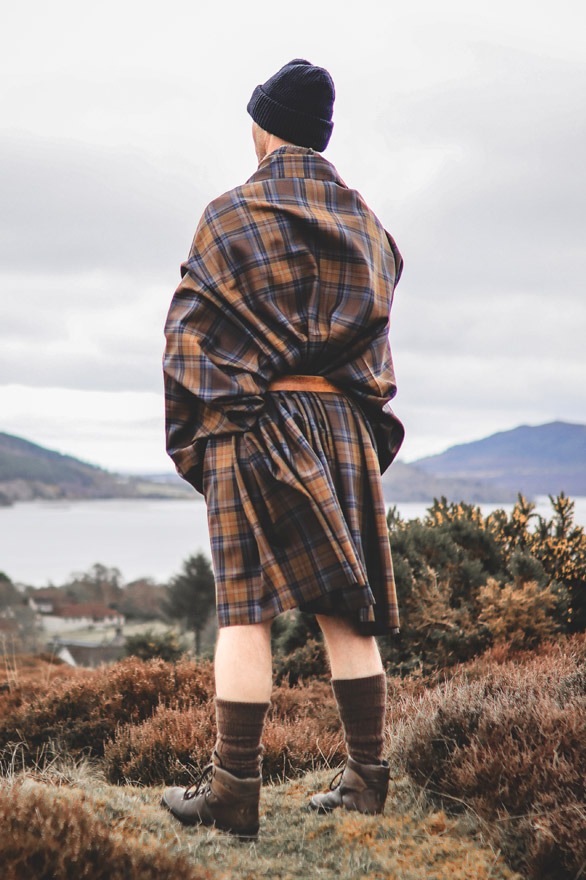The Great Kilt

What is it about the Great Kilt that makes it so distinctively Scottish? How did this garment come to evoke such passion and pride? Understanding this requires us to travel back in time, tracing the kilt’s journey, which has been anything but straightforward.
The origins of the kilt as we know it today can be traced back to the late 16th century with the Great Kilt (Feileadh Mor) or Belted Plaid (Breacan an Fheilidh). This early version of the kilt resembled the modern kilt but included an additional piece that could be draped over the shoulder or used as a hood. Think of William Wallace in Braveheart or Jamie Fraser in Outlander.
The Advantages of the Great Kilt
The Great Kilt offered many advantages to Highlanders facing the harsh Scottish weather. It provided warmth and flexibility and could serve as a blanket for overnight missions. The fabric was quick-drying, which was particularly useful. Essentially, it was a single piece of wool fabric, about five yards long and two yards wide. To increase its durability, the cloth was soaked in hot water and beaten to make it thicker.
The sight of a kilt stirs a deep sense of patriotism and vividly depicts iconic Scottish history. Clan-specific tartans also emerged, giving wearers a sense of loyalty and honour, as the patterns represented their clans. By the end of the 18th century, the Great Kilt was replaced by the smaller Kilt we are familiar with today. It can now be found in museums or worn by reenactors, standing as a significant piece of Scottish history.
It’s important to remember the Dress Act of 1746, when the government banned Highland dress following the Jacobite uprising, which is something we will go into at a later date.
Understanding the kilt’s historical significance helps explain why it is such a powerful symbol of Scottish identity. The kilt has evolved from a practical garment to a marker of cultural pride and resistance, standing as a testament to the resilience and enduring spirit of the Scottish people. From the Great Kilt to the modern-day kilt, this iconic garment continues to inspire a deep sense of national pride and connection to Scottish heritage.
The kilt’s transformation from the Great Kilt to the modern version reflects Scotland’s broader history and cultural shifts. Whether displayed in museums, worn by reenactors, or donned by Scots worldwide, the kilt stands as a proud reminder of Scotland’s rich history and enduring legacy.
Contact us for more details regarding the kilts we can supply..
